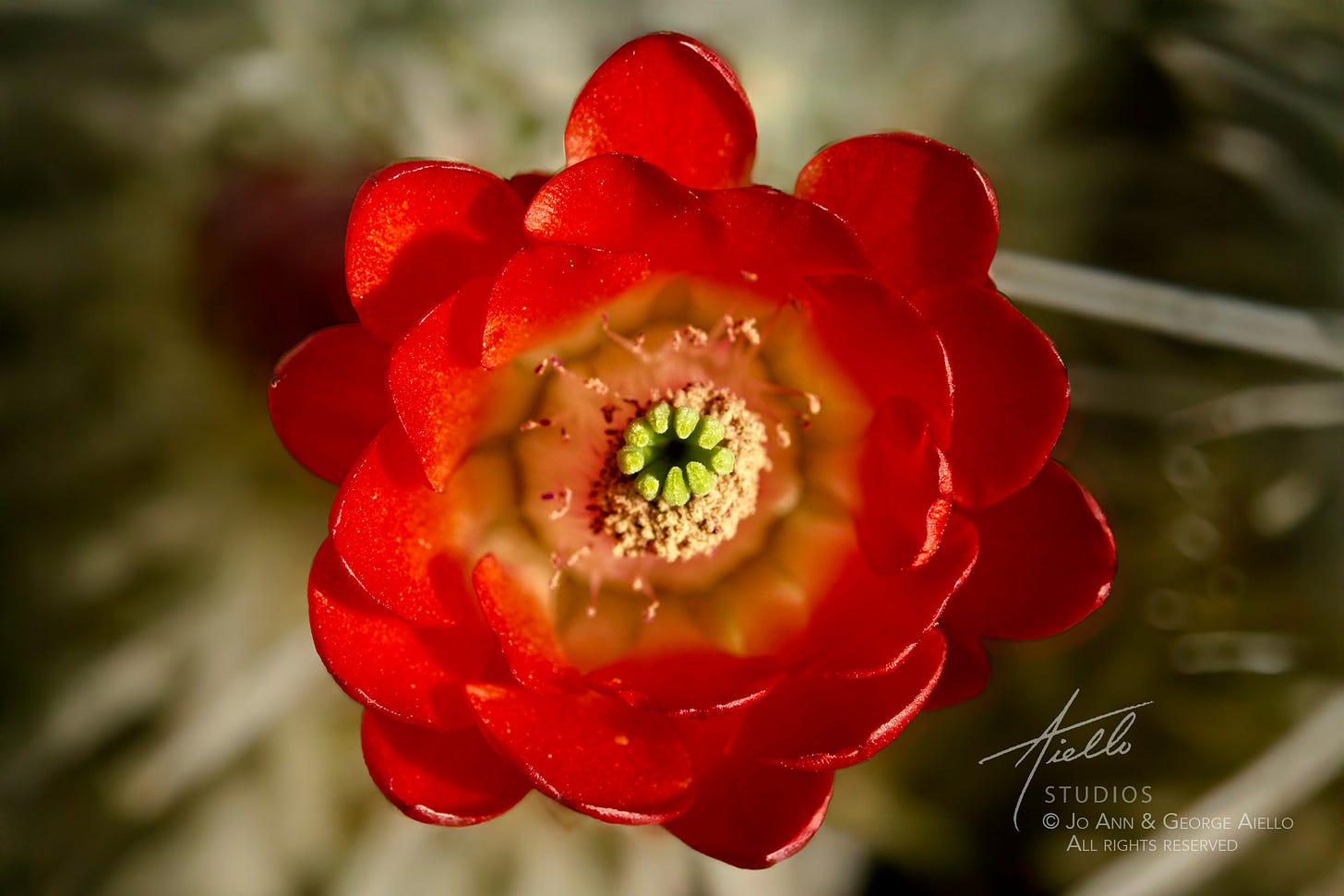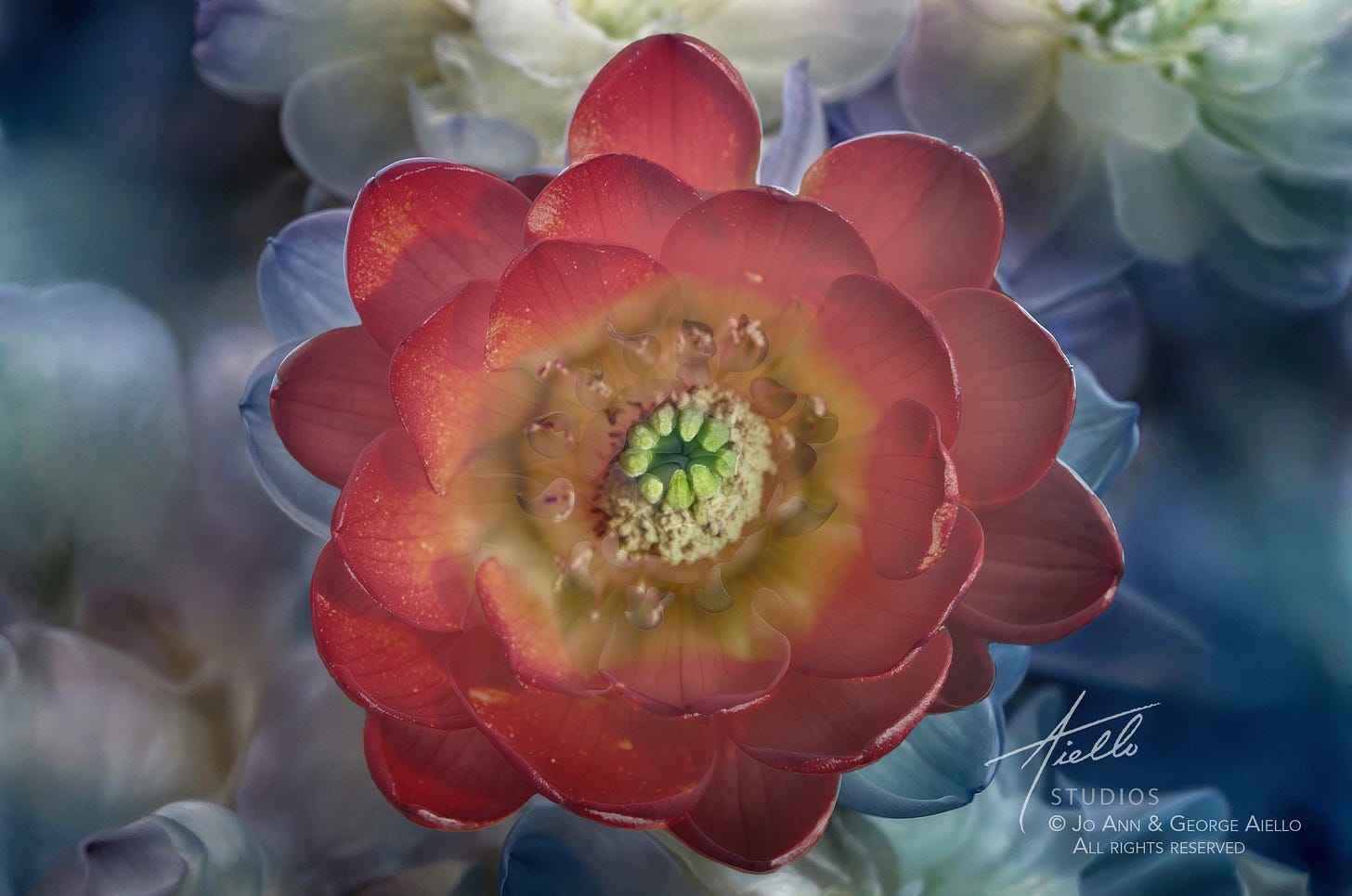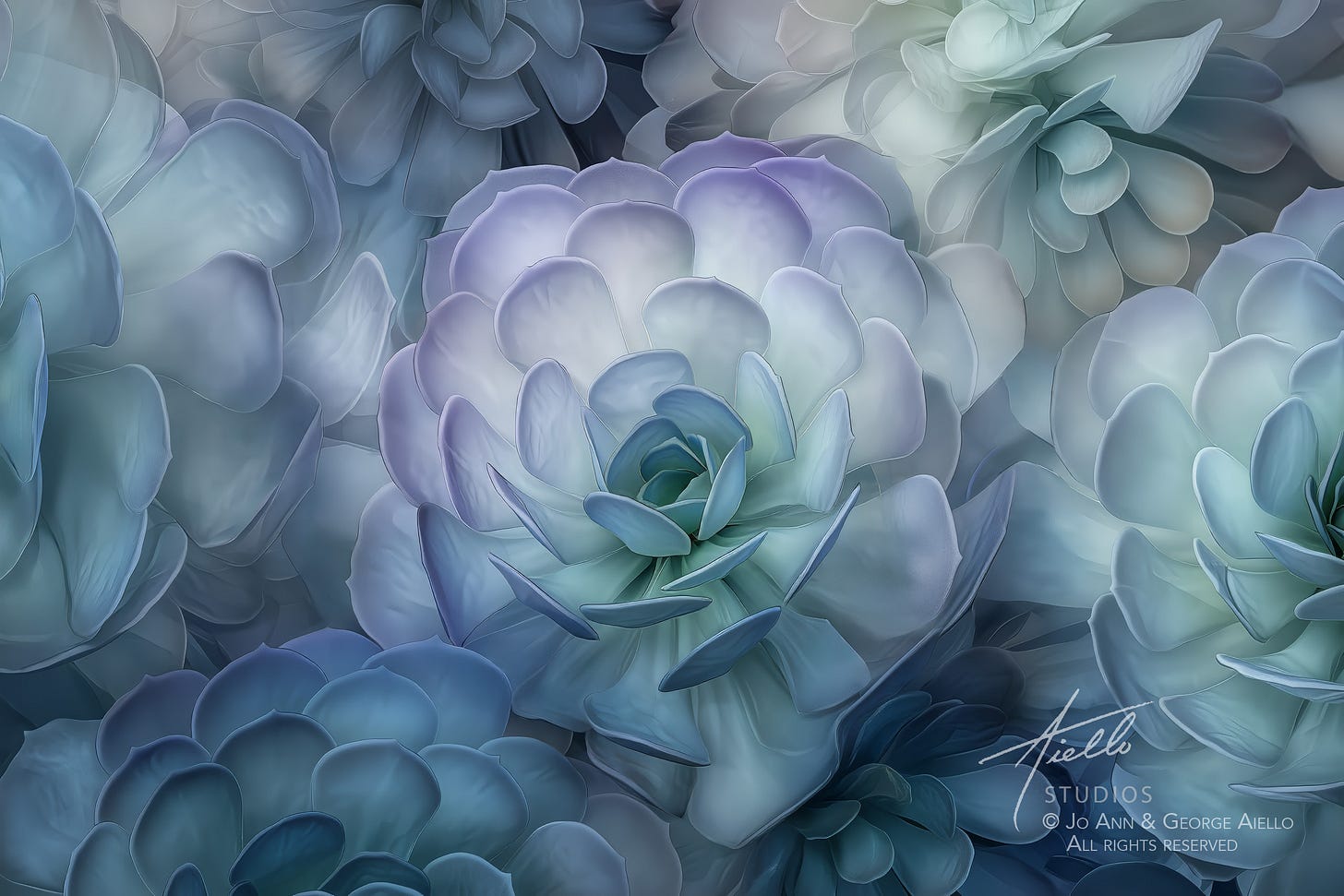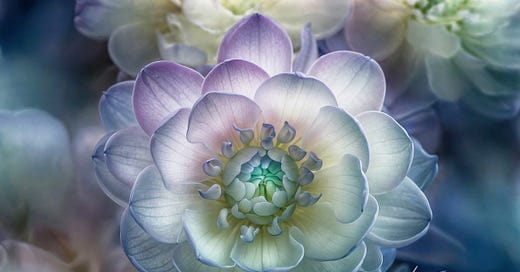From Photograph to Digital Art Using Leonardo AI
Reimagining a photograph using reference images.

Transforming a photograph into digital art opens up creative possibilities for photographers that go beyond what the camera captures. In this article, we reimagine an original photograph of a Claret Cup flower using Leonardo AI. Our goal was to alter the flower’s color palette and overall aesthetic while maintaining its lines and structure. We also wanted to create a visually cohesive piece that fits within a new digital art series we’re working on.
A few words about Leonardo AI
I have written several articles about using Midjourney recently. However, Leonardo AI is also an outstanding image generator that we use just as often. As a photographer, I find its interface intuitive and well-suited for image-based transformations. Its rendering capabilities are excellent. While it takes a little getting used to, it becomes second nature after some experience.
Some key advantages of Leonardo AI include:
A photographer-friendly interface with a structured workflow.
A diverse library of model and style presets, including Cinematic Kino, Phoenix, and Flux, among others.
A robust reference image system with 10 different types, compared to the 2-3 typically found on other platforms.
Capable of retaining lines, structures, and even fine details from reference images.
Competitive subscription pricing and a more affordable private mode than Midjourney.
Take Advantage of our Introductory 30-Day Free Trial.
We want to make it easy and as risk-free as possible. Subscribe or upgrade by July 31, 2025, to try all paid content—free for 30 days!
The Original Image and Transformation Process
Below is the original photograph of the Claret Cup flower used as the primary reference image. Below that, I have transparently overlayed the original flower on the transformed image so you can better see the alignment. For this transformation, we utilized “Content Reference” rather than the “Image to Image” reference image option. While there is some “reimagination”, particularly at the center, the basic petal lines are pretty much intact.


Style Reference Image
To create consistency within a digital art portfolio that we are working on, we selected a previously transformed Aeonium image. This image provided the desired color tones, texture, background styling, and overall mood that we wanted. The Style Reference parameter was set to Ultra to give it extra weight. Leonardo AI allows multiple Style Reference images. Just be sure to select complementary ones; otherwise, the results will be unpredictable.

The final artwork, shown at the top of this article, maintains the structure of the petals from the original Claret Cup photo while integrating the color palette and artistic style from the Aeonium Style Reference image.
Take Advantage of our Introductory 30-Day Free Trial.
We want to make it easy and as risk-free as possible. Subscribe or upgrade by July 31, 2025, to try all paid content—free for 30 days!
Paid subscribers can continue below to view more about how it was done.



